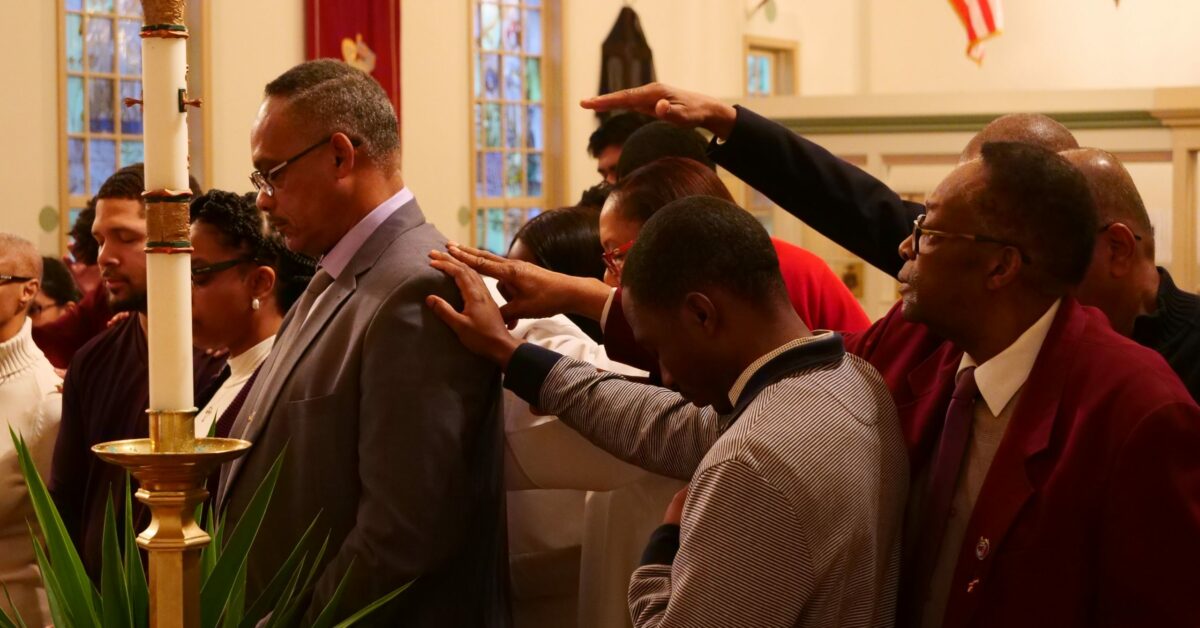Absorbed into Jesus Christ: A Life of Renunciation of the Old and Adhesion to the New
One of the reasons that we should perceive the catechumenate as the beginning of a lifelong apprenticeship in the faith with other Christians is because becoming a Christian requires a reorientation of life. To use biblical language, it requires death and resurrection—death to the old life and birth of a new life. This is a radical change and it necessitates having Christian mentors to guide those moving toward this baptismal reorientation.
Paul Galbreath in the 4th chapter of Leading through the Water identifies the renunciations in the baptismal liturgy as very directly expressing this death to the old and rebirth into the new that it is at the heart of the baptismal journey. The renunciations—in Lutheran Service Book “I renounce the devil, and all his works, and all his ways”—express the radical reformation of identity that is taking place in the catechumenate through God’s baptismal work. Galbreath refers to this reformation of identity as a movement toward gospel values and away from values inconsistent with and contradictory of the gospel. The Word proclaimed throughout the catechumenate facilitates and works this movement away from the person’s past life into a renewed life within a new community.
Yet, this is a fundamentally challenging reorientation. It is not easy to renounce one’s own past identity. Lots of questions and doubts surface in the process. Aspects of Christian belief will seem strange and foreign to the inquirer and catechumen. That includes the renunciations themselves. What is the devil? How do I participate in evil? What is sin? Am I really to be identified as a sinner? What is this life in Christ that I am adhering to? Why does this community love the stranger and the foreigner? Is that really what my life is all about? Is being a Christian really who I am? As Galbreath observes, “The baptismal liturgy presents the demands of this new way of life” (67).
The Christian community holds the members of the community accountable to that baptismal vision. For the catechumens their mentors/sponsors personally embody that vision and the values of renunciation for the catechumens. Through the catechumenate the catechumens “catch” the vision of a new identity for themselves and the role that renunciation (death to the old, birth to the new) plays in this new vision.
The renunciations are a present-tense, ongoing reality. For each catechumen they are grounded in trust of the Triune God and the Christian community that bears witness to him. That same community supports and upholds the catechumens as they make this radical transition. The renunciations take shape in the individual catechumens’ lives and decisions (ie. I can no longer pursue financial wealth at the cost of everyone in my path). Through the renunciations the catechumens see how the Word of God shapes a different understanding of their priorities.
The catechumenate shapes a life of ongoing renunciation (a synonym would be repentance). Through the ongoing act of renunciation and adhesion to Christ the Christian community becomes the living embodiment of Christ to each other and the world. It is a death and resurrection experience that forms the catechumen into a completely new vision of communal life under the lordship of Jesus Christ. Through this ongoing act of renunciation and adhesion all the baptized are absorbed into Jesus Christ and his story. And it all starts in the catechumenate.
*Photo by Aaron Burden on Unsplash

